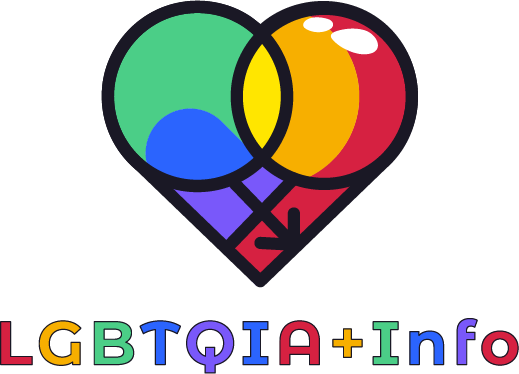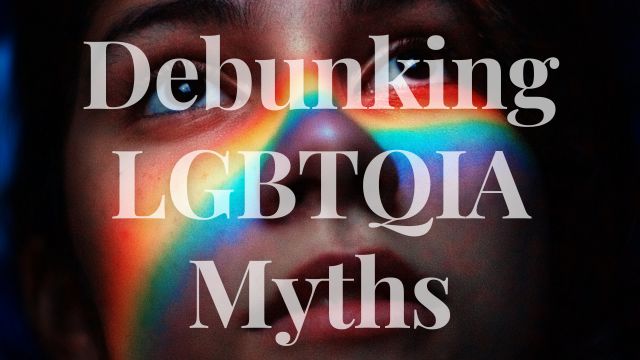Many people’s ideas of the LGBTQIA community are based on myths and misunderstandings that have persisted for decades. Misconceptions about the LGBTQIA community have negative psychological and social consequences. This essay will dispel some of the most widespread misconceptions about the LGBTQIA community.
Introduction
The LGBTQIA community has been stigmatized and discriminated against for many years, making it a marginalized minority that is prone to prejudice. There are a lot of myths and misunderstandings about them, which is one of the primary reasons why this is the case. These misconceptions have the potential to give rise to unfavorable preconceptions, fear, and prejudice. We want to dispel some of the most widespread misconceptions about the LGBTQIA community while also providing information that is based on reality in this post.
Myth: LGBTQIA individuals choose their sexuality
The idea that members of the LGBTQIA community may change their sexual orientation is a pervasive yet false stereotype. This is not correct. A person’s sexual orientation is an innate and immutable component of who they are. Like diverse eye colors or skin tones, LGBTQIA persons are born this way.
Myth: LGBTQIA individuals are promiscuous and unable to form long-term relationships
One common misconception about the LGBTQIA community is that its members are either unfaithful or unable to commit to a single partner over the long term. This, however, is not the case. Long-term, committed relationships are possible for people in the LGBTQIA community, as proved by studies. They want love, friendship, and closeness just like everyone else.

Myth: All LGBTQIA individuals are the same
To believe this misconception is to think that all people who identify as LGBTQIA are the same. However, the LGBTQIA community includes people of many various colors, creeds, and cultures. They identify with multiple genders and sexualities.
Learn about the meaning behind each letter in LGBTQIA+ and be surprised by what they represent!
Myth: LGBTQIA individuals are mentally ill or have a psychological disorder
This false belief does more damage than good. People who identify as LGBTQIA do not suffer from a mental illness or psychiatric problem as a result of their sexual orientation or gender identity. Homosexuality was de-pathologized by the American Psychological Association (APA) in 1973. Anyone, regardless of their sexual orientation or gender identity, is vulnerable to experiencing mental health difficulties.
Myth: LGBTQIA individuals are a danger to society, especially children
There is no proof for this false belief in the scientific community. The LGBTQIA community does not pose a threat to the general public or to children. In reality, research shows that LGBTQIA people are disproportionately targeted for violence and prejudice.
Myth: Being LGBTQIA is a sin or against nature

Myth: LGBTQIA individuals can be “cured”
This misconception is hazardous and has been shown to be both damaging and ineffectual. Conversion therapy, commonly referred to as reparative therapy or homosexual conversion therapy, aims to alter a person’s sexual orientation or gender identity. Numerous medical and mental health groups have criticized it as unethical and ineffectual.
Myth: Same-sex relationships are not as valid as heterosexual relationships
This falsehood has no basis in reality. No matter the gender, love is love. All types of relationships, including those between people of the same sex, are equally important and genuine. In reality, research has shown that same-sex couples are just as happy and stable in their relationships as their heterosexual counterparts.
Myth: Gender identity and sexual orientation are the same thing
Sexual orientation and gender identity are two distinct concepts. A person’s sense of self as male, female, or somewhere in between is referred to as gender identity, whilst their attraction to other people is referred to as sexual orientation. As distinct facets of a person’s identity, the two should not be mixed together.
Myth: LGBTQIA individuals are more likely to abuse drugs and alcohol
This false belief is founded on prejudice and is not supported by evidence. There is no correlation between being a member of the LGBTQIA community and substance misuse. Substance misuse is a common way that LGBTQIA people deal with the stress and prejudice they experience in society.

Myth: Transgender individuals are confused or attention-seekers
It’s not only unhelpful but also false, to believe this myth. Transgender people are not unsure of themselves or looking for sympathy. They are perfectly comfortable identifying with a gender other than the one they were assigned at birth. Gender identity is central to the lives of transgender people, but they often experience hostility because of it.
Explore the concept of transgender, gain a deeper understanding of its meaning, identity, and lived experience, and broaden your knowledge of the LGBTQIA+ community.
Myth: Bisexual individuals are just experimenting or cannot make up their minds
This false belief is founded on prejudice and is thus not true. Bisexuals have the capacity to feel attraction to people of both sexes, and their sexual orientation is as legitimate as that of anybody else’s. Some people do not accept bisexuality as a legitimate sexual orientation, and as a result, bisexual persons frequently experience erasure and discrimination.
Myth: Intersex individuals are extremely rare and not really part of the LGBTQIA community
That’s just a myth. People who are born with sex traits that are neither exclusively male nor female are said to be intersex. Recognizing and responding to the unique experiences and concerns of the intersex members of the LGBTQIA community is critical.
Conclusion
In conclusion, stereotypes about the LGBTQIA community are damaging and contribute to prejudice and stigma. It’s critical to distinguish reality from fiction and educate ourselves on the struggles and experiences of LGBTQIA people. A society that recognizes and respects variety in all of its manifestations must be established.

